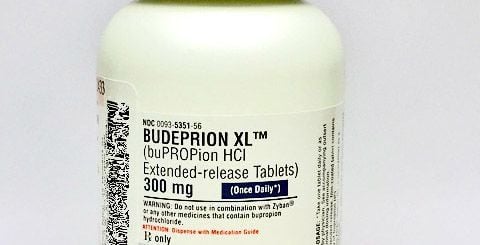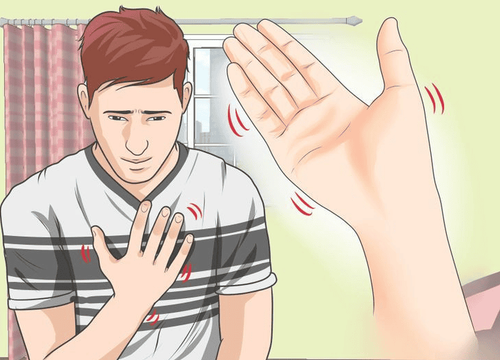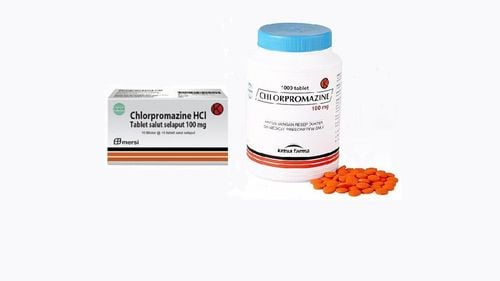This is an automatically translated article.
Asendin, also known as Amoxapine, is a tricyclic antidepressant used to treat symptoms of depression and anxiety disorders. It works by restoring the balance of natural substances in the brain (neurotransmitters).
1. What is Asendin?
Asendin (Amoxapine) is a tricyclic antidepressant. Amoxapine is a derivative of the antipsychotic drug doxepin and has dopamine receptor blocking properties. In addition, there may be some antipsychotic activity but the clinical importance is unknown.
The mechanism of action in the treatment of depressive disorders involves the inhibition of norepinephrine and to a lesser extent serotonin reuptake by amoxapine and its active metabolites 8-hydroxy amoxapine and 7-hydroxy amoxapine.
2. Indications for Asendin
Asendin is indicated in the following cases:
Asendin is indicated for the relief of depressive symptoms in patients with reactive or neurotic depressive disorder as well as endogenous depression and psychosis. God. Asendin is also indicated for depression accompanied by anxiety or agitation.
3. Contraindications
Asendin is contraindicated in the following cases:
Patients with hypersensitivity to Asendin or dibenzoxazepine derivative tricyclic antidepressants. Concomitant or recent use (within 2 weeks) with monoamine oxidase inhibitors is not recommended. The drug is not recommended for use in the acute recovery period after myocardial infarction.
4. How to take and dose of Asendin
Asendin must be used under the direction of a doctor.
Adults:
The starting dose is usually 50 mg, taken 2 or 3 times a day. An initial dose of up to 300 mg/day may be used. Usual dosage: 200-300 mg/day. The dose may be increased to a maximum of 400 mg/day if a good response to 300 mg/day has not been achieved for at least 2 weeks and the patient is tolerable. Hospitalized patients, who are not receiving antidepressant therapy and have no history of seizures, may be cautiously increased dose up to 600 mg/day in divided doses.
After symptoms are under control, gradually reduce to the lowest effective dose. Not stopping suddenly will cause unwanted effects.
Children: The safety and effectiveness of Asendin in pediatric patients < 16 years of age have not been established.
Elderly patients:
It is recommended to use a lower dose because liver and kidney function is often impaired, when gradually increasing the dose, close monitoring is required. The starting dose is usually 25mg 2-3 times/day. Increase dose to 50 mg 2-3 times/day at the end of the first week if tolerated. Usual dosage: 100 - 150mg/day; Some patients may require higher dosages (maximum 300 mg/day).
5. Side effects of Asendin
During the use of Asendin, patients may experience some of the following side effects:
Common effects
Anxiety, insomnia, restlessness, nervousness, palpitations, tremor, confusion, excitement, nightmares, ataxia, changes in EEG patterns; Edema, rash on the skin; Increased prolactin levels; Nausea; Dizziness, headache, fatigue, weakness, excessive appetite, increased sweating. Uncommon effects
Vision disturbance, pupil dilation, urinary delay, urinary retention, nasal congestion. Hypotension, hypertension, syncope, tachycardia. Drug fever, urticaria, photosensitivity, pruritus, vasculitis, hepatitis. Tingling, paresthesia of extremities, tinnitus, disorientation, convulsions, decreased arousal, numbness, loss of coordination, attention disorder, hyperthermia, tardive dyskinesia. Neuroleptic malignant syndrome. Leukopenia, agranulocytosis. Epigastric pain, vomiting, flatulence, abdominal pain, strong taste, diarrhea. Increased or decreased libido, impotence, menstrual irregularities, breast enlargement and bleeding in women, syndrome of inappropriate antidiuretic hormone secretion. Watery eyes, weight gain or loss, changes in liver function, pain with ejaculation. Rare effects
Paralytic ileus; Atrial arrhythmias (including atrial fibrillation), myocardial infarction, stroke, heart block; Illusion; Thrombocytopenia, eosinophilia, purpura, petechiae; Swelling of the parotid; Changes in blood glucose levels; Pancreatitis, hepatitis, jaundice, urinary incontinence, testicular swelling, loss of appetite, hair loss.
6. Precautions when using Amoxapine
During the use of Amoxapine, patients should be aware of some of the following issues:
Depression may become worse and/or suicidal thoughts and behavior or unusual changes in behavior may occur. vi in both adult and pediatric patients with major depressive disorder, whether or not they are taking antidepressants. All patients being treated with an antidepressant for any indication should be closely monitored, especially during the first few months of drug therapy, or at times of dosage changes, increase or decrease the dose. The risk of bipolar disorder should be screened by obtaining a detailed psychiatric history of the patient (family history of suicide, bipolar disorder, depression, etc.) before initiating treatment. It should be noted that Asendin is not approved for use in the treatment of bipolar depression. Tardive dyskinesia, syndrome of potentially irreversible movements, involuntary movements, and dyskinesia may occur in patients receiving Asendin, but are rare. Consider discontinuing the drug. Asendin use can cause neuroleptic malignant syndrome (NMS), a potentially fatal syndrome. The drug should be stopped immediately and treated symptomatically. There may be conduction defects, arrhythmias, acute myocardial infarction, stroke and sinus tachycardia, especially at high doses of Asendin. Use with caution in patients with potentially harmful excess anticholinergic activity (eg, history of urinary retention, increased intraocular pressure, angle-closure glaucoma). Use caution in patients with seizure disorders. Possible sensitization reactions include skin rash and fever due to the drug; common in the first few days of treatment. Discontinue the drug if rash and/or fever develops. Note to Pregnancy: Embryotoxicity has been observed in rats and rabbits given orally at approximately human doses. Therefore, Asendin should only be used during pregnancy if the potential benefit outweighs the potential risk to the fetus.
Caution for nursing women: Asendin, like many other systemic drugs, is excreted in breast milk. Because the effect of the drug on the neonate is unknown, caution should be exercised when Asendin is administered to a nursing woman.
Note when driving and operating machinery due to side effects such as drowsiness, dizziness, headache.
7. Amoxapine drug interactions
Concomitant use of amoxapine with monoamine oxidase inhibitors (MAOIs) or selective serotonin reuptake inhibitors (SSRIs) (eg, citalopram, escitalopram, fluoxetine, fluvoxamine, paroxetine, sertraline) may result in a very dangerous serotonin syndrome. dangerous. Concomitant use with MAOIs or use at least 2 weeks after discontinuation of the drug is contraindicated. Use with caution and consider amoxapine dose adjustment for SSRIs, administered at least 5 weeks after discontinuation of fluoxetine. Paralytic ileus may occur in patients receiving tricyclic antidepressants in combination with anticholinergics. Asendin may increase the effects of alcohol and the effects of sedatives and other CNS depressants. Cimetidine may increase plasma concentrations of Asendin, increasing side effects, especially anticholinergic effects. Concomitant use with CYP2D6 inhibitors (class 1C antiarrhythmics (eg, flecainide, propafenone), quinidine; antipsychotics, methylphenidate, selective serotonin reuptake inhibitors (SSRIs) increased plasma concentrations. Asendin should be used with care and dose adjustment considered. Asendin may antagonize the antihypertensive effects of guanethidine and related compounds Asendin may interfere with the absorption of levodopa. Asendin enhances the vasopressor and cardiac effects of sympathomimetic drugs (eg, amphetamine, epinephrine, norepinephrine, phenylephrine). Concomitant use of Asendin with thyroid drugs may cause cardiac arrhythmias. Amoxapine, also known as Amoxapine, is a tricyclic antidepressant, used to treat symptoms of depression and anxiety disorders.It works by restoring the balance of natural substances in the brain (transmitters). nervous system). To ensure the effectiveness of treatment and avoid unwanted side effects n, the patient needs to strictly follow the instructions of the doctor, professional pharmacist.
Follow Vinmec International General Hospital website to get more health, nutrition and beauty information to protect the health of yourself and your loved ones in your family.
Please dial HOTLINE for more information or register for an appointment HERE. Download MyVinmec app to make appointments faster and to manage your bookings easily.
References: drugs.com, holevn.org













